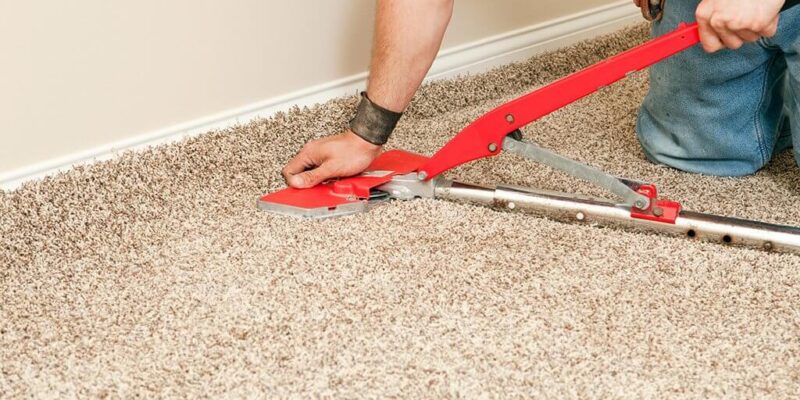When you are preparing for office carpet installation, there are a few important steps to take to make sure that the installation goes smoothly and efficiently. These steps include
- Measure the space: Measure the area of the room where you are planning to install the carpet, including the walls and any furniture that will be in the room. This will help you determine the amount of carpet you need to order.
- Remove furniture and other objects: Clear the space of all furniture, rugs, and any other objects that could get in the way. You may need to move the furniture to another room or store it in the basement or attic.
- Vacuum the floor: Make sure to vacuum the floor thoroughly before the installation to remove any dirt and dust that could be trapped under the carpet.
- Clean the floor: Clean the floor with mild detergent and a damp cloth to remove any grease or other dirt that may be sticking to the floor.
- Repair any damage: If there are any holes or cracks in the floor, you should repair them before installation.
- Protect the walls and baseboards: Cover the walls and baseboards with a plastic sheet or drop cloth to protect them from any dust and dirt that may be created during the installation.
- Prepare the padding: If you are using a cushion under your carpet, make sure to lay it down before the installation.
Following these steps will ensure that your office carpet installation goes as smoothly as possible.
Sticking to a Budget for Carpet Installation
- Determine how much carpet you need and how much it will cost. Measure the area that needs to be covered, research different carpets and their prices, and get an estimate from a professional.
- Research financing options for your carpet installation. You may be able to get a loan or use a credit card to cover the cost of your carpet installation.
- Create a budget for the carpet installation. Factor in the cost of the carpet, the cost of installation, and any other related costs such as padding, trim, or other supplies.
- Shop around for the best price. Compare prices from different retailers and professional installers.
- Consider buying used or discounted carpets. You can often find good deals on used or discounted carpet that still looks great.
- Consider DIY installation. If you’re comfortable with basic home improvement tasks, you may be able to install the carpet yourself and save money on installation costs.
- Factor in additional costs. Make sure you include the cost of any additional supplies or services that you’ll need to complete the installation, such as trim, padding, and door thresholds.
Professional vs DIY Installation:
- Professional installation ensures that your carpet is properly fitted and installed to a high standard. Professional installers are experienced, and knowledgeable and use the right tools for the job.
- Professional installers also have access to specialized tools and techniques that make the job easier, faster, and more efficient.
- Professional installers can also inspect the subfloor and make sure that the area is properly prepared for installation.
- Professional installers can make sure that the carpet is properly stretched and that the seams are properly finished.
- Professional installation usually comes with a warranty, so you can be sure that your carpet will last for years to come.

Comments